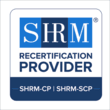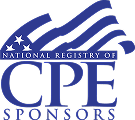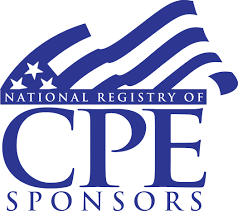Workplace Violence on the Rise: How Are Employers Ensuring Safety

About this Webinar
About Webinar
Every year, thousands of American workers report having been victims of workplace violence. In 2021-22, assaults resulted in 57,610 injuries. In 2022, 525 fatalities due to assault were reported, according to Injury Facts.
Workplace violence is the act or threat of violence. It ranges from verbal abuse to physical assaults directed toward people at work or on duty. Violence can occur in any workplace and among any type of worker.
The impact of workplace violence can range from psychological issues to physical injury, or even death. The risk for fatal violence is greater for workers in sales, protective services, and transportation. The risk for nonfatal violence resulting in days away from work is greatest for healthcare and social assistance workers.
According to the Bureau of Labor Statistics, 20,050 workers in the private industry experienced trauma from nonfatal workplace violence in 2020. These incidents required days away from work. Of those victims who experienced trauma from workplace violence:
- 73% were female
- 62% were aged 25-54
- 76% worked in the healthcare and social assistance industry
- 22% required 31 or more days away from work to recover
- 22% involved 3-5 days away from work
Over the past few years, workplace violence has been on the rise, particularly in specific industries such as healthcare and social assistance. Healthcare workers are at a significantly higher risk of experiencing workplace violence, with incidents occurring at a rate four times higher than in the private sector (OSHA, 2015). The shift toward remote work, economic instability, and political polarization have contributed to increased tensions and conflicts within organizations (Lipscomb & London, 2015). For instance, data from the FBI shows that workplace active shooter incidents have increased by more than 150% between 2006 and 2018 (FBI, 2019).
Session Highlights
- The workplace violence in a federal, state and local level
- The way OSHA is involved in mandating protections for employees
- Policy and training will provide employers with valid steps in mitigating workplace violence
- How states have already developed, mandated workplace violence efforts
- The role of the Employer in protecting employees and providing safety in the workplace
- The elements of a safe workplace against violence initiated by Employers
- Employers should identify employees with volatile tendencies and aggressive behaviour’s.
- How an effective Employee Assistance Program (EAP) can help employees manage mental health issues as a result of violence in the workplace
- Penalties and fines placed on the Employer and/or the employee who is part of workplace violence incident
- How Managers who don’t follow safety guidelines can be at risk of criminal sanctions due to Vicarious Liability
Why You Should Attend
Managers and safety professionals at every workplace should develop a policy on violence that includes:
- Employee training and creating an emergency action plan
- Conducting mock training exercises with local law enforcement
- Adopting a zero-tolerance policy toward workplace violence
Who Should Attend
- All Employers
- Business Owners
- Company Leadership
- Compliance professionals
- Payroll Administrators
- HR Professionals
- Compliance Professionals
- Managers/Supervisors
- Employers in all industries
- Small Business Owners
Speaker(s)
Margie Faulk, PHR, SHRM-CP is a senior level human resources professional with over 14 years of HR management and compliance experience. A former Compliance Officer for Federal Defense Contracting Industry, Margie has worked as an HR and Compliance advisor for major corporations and small businesses in the small, large, private, public and Non-profit sectors. Margie is bilingual (Spanish) fluent and Bi-cultural.
Margie’s focus is on multi-state, national, state and local workplace compliance. Additionally, Margie is working on International compliance initiatives globally which includes workplace compliance in other countries like the UK, Canada, France, Brazil, China, Africa, Mexico and India, just to name a few.
CEUs

The use of this seal confirms that this activity has met HR Certification Institute’s® (HRCI®) criteria for recertification credit pre-approval.
Credits: 1.5

Supreme Trainer is recognized by SHRM to offer Professional Development Credits (PDCs) for the SHRM-CPSM or SHRM-SCPSM. This program is valid for PDC(s) for the SHRM-CP or SHRM-SCP. For more information about certification or recertification, please visit www.shrmcertification.org
Credits: 1.5

Supreme Trainer is registered with the National Association of State Boards of Accountancy (NASBA) as a sponsor of continuing professional education on the National Registry of CPE Sponsors. State boards of accountancy have final authority on the acceptance of individual courses for CPE credit. Complaints regarding registered sponsors may be submitted to the National Registry of CPE Sponsors through its website: https://www.nasbaregistry.org.
Credits: 1.5

Credits: 0
Unlimited Webinars
Why You Should Subscribe to Our Unlimited Webinar?

Unlimited Live and On-Demand Courses
Watch all live or recorded webinars (up to 120 minutes long). Get instant access to a library of more than 500 high quality courses presented by best-in-class presenters.

CEUs: APA, CPE, SHRM and HRCI Credits
Fulfil your recertification requirements by earning CEUs from APA, CPE, SHRM and HRCI.

Free Access to Course Materials
Each program comes with Additional Course Materials, which you can download and read anytime.

Additional Discounts
Get flat 20% discount on Premium Product Category like, Long Hour Webinars.
SUBSCRIBE NOW
